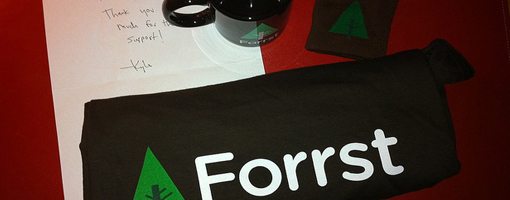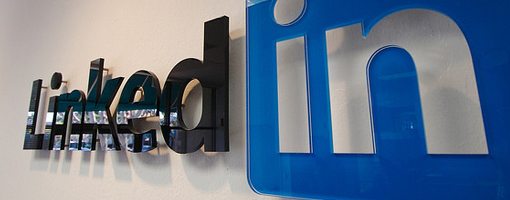Networking Tips in the Design Industry
Web designers come at a dime a dozen. These days businesses are not hiring professional designers to create work anymore. Instead most of our progress has shifted overseas where outsourcing web design and coding is common place.
This shows how much industry name really means. The conversion into a well-known and respected designer takes time and a lot of hard work. There are some great networks out there for connecting with designers and once you understand how to utilize their power almost anything is possible!
The Ultimate Designer Toolkit: 2 Million+ Assets
Envato Elements gives you unlimited access to 2 million+ pro design resources, themes, templates, photos, graphics and more. Everything you'll ever need in your design resource toolkit.
Connecting with Fellow Designers
Freelancers tend to find themselves home alone. This happens a lot actually, so much so that we’re seeing more designers communicating through the web. Social interaction is simply a component of what it means to be alive and human.

Aside from just gaining new ground in the design industry there are numerous benefits to be had with networking. As you can develop stronger ties with individual designers you have a small market of knowledgeable friends to turn onto for any questions. These can range from questions about Adobe Photoshop filters to asking for critical reviews of design work.
To build a strong support base you have to understand the different types of designers. You’ll often be looking to connect with individuals of your age range and also in your skill area, either slightly above or below. It would also be wise to not limit connections with any sole entity or group. Namely I’m talking about designers and developers splitting off to hang out with each other in some type of private club.
Networks of Web Professionals
Forrst is the most recent and quickly growing network of both designers and developers. The community is still private from the public and requires an invite key to gain access. Luckily the site’s founder Kyle Bragger has been offering users the chance to invite friends into the community.

The closed private network technique is also used on social design communities such as Dribbble and Designmoo. This is not meant to keep out the public but rather to fence in the talented artists who deserve to showcase their works. Without a solid portfolio it will prove difficult to gain access into any of these 3 places. The easiest solution would be to contact professionals through Twitter and see if you can score an invite (Forrst may be the easiest).
The Twitter World
When we get into the topic of networking Twitter stands out like a sore thumb compared to anything else. Twitter is the largest open collaboration of conversations happening and it’s in constant update every second.
Try creating an account if you don’t already have one and follow some of the most influential designers. You can try checking Google or the previously mentioned design networks for a reference on Twitter usernames. Twitter’s search and hashtag functionality offers a great alternative to browsing Google for Twitter users.

By searching for tweets revolving around “web design” or even #webdesign you are sure to find some impressive individuals. With a great followers list comes a secondary benefit of a dynamic, interactive news feed. You can share links with your followers and keep updated on the latest design trends from your fellow designers.
The global Twitterscape works this way within any sub-niche. Web developers, mobile programmers, video game lovers and even florists will have their own section of the pie. It’s not difficult to join and since access is free what more convincing do you need?
Marketing as a Developer
Programmers generally have a more difficult time building up new contacts and finding social networks. The term “programmer” is also relatively vague but in the scope of this article I’m viewing its context as an umbrella term for front-end and backend web developers.
Along with Twitter and other mainstream social networks there really aren’t many places developers can feel free to join. There are many programming forums built on vBulletin and similar software, but these offer an out-dated form of communication. Threaded replies to older posts can get very confusing after many pages of conversation. Not to mention the massive delay between replies can be exhausting trying to keep up.

A newer and very successful startup GitHub(SSL secured) has seen some great traction over the past few quarters. It’s a social hub for developers of all kinds to join and share their projects as open-source scripts. After creating a profile you can develop different repositories to house all of your development projects.
We’re seeing all different kinds of languages being supported here from developers around the world. Among the most popular are PHP, Ruby, Python, JavaScript, Objective-C for iOS and Java for Android mobile apps. All of the code repos are free to download and even manipulate, given permission from the author.
LinkedIn Connections
There have been too many times to count how many great people I’ve met through LinkedIn. The site provides a professional network for anyone to share their past work experience and projects via the web. It’s the greatest medium to not only share previous design works but to build your name in the industry… possibly even land some new gigs!

The connections system is different here than any other where you are able to connect with “friends of a friend” through a reference. Holding connections via LinkedIn is very similar to real world relationships with the added benefit of possible introductions to other like-minded individuals. LinkedIn has an internal messaging system which makes communication a breeze.
Some features are a bit derivative and bland. Profile pages offer links to your blog, Twitter, and other networks to connect with people easier. You are also able to share your IM and e-mail accounts, if you so choose. The company is still in the midst of growth and garners a lot of potential affirmation to the business crowd.
Hackers of a New Label

I find myself falling into different positions depending on the type of job I’m working on. Though all of my projects relate in some way to digital design I am required to shift into many roles to fill all my projects.
Working in this fashion gives you a whole new perspective into the design industry. We assume things to be static and set into one box, but ideas and creations are always in motion. Don’t pass up anybody you meet through networking via these social communities. Marketers, branding experts, and anybody you meet who may hold useful information is always a keeper.
My favorite new community falls to HackerNews hands down. It’s full of interesting articles on science, technology, economics, business, and entrepreneurship. Not only this but the audience is full of intelligent individuals who are capable of holding bright, thought-provoking conversations. If you’re interested at all in investing, venture capital, or entrepreneurism I’d recommend checking out the site.
Conclusion
These are just a few websites which offer some of the more advanced features for networking. Web design has gone mainstream since the Internet has risen in popularity and a new breed of designers are taking over.
The world operates fiercely on who you know and who knows you. By reinforcing your connections with other designers you’re giving your portfolio a fighting shot amongst the sea of design talent.


